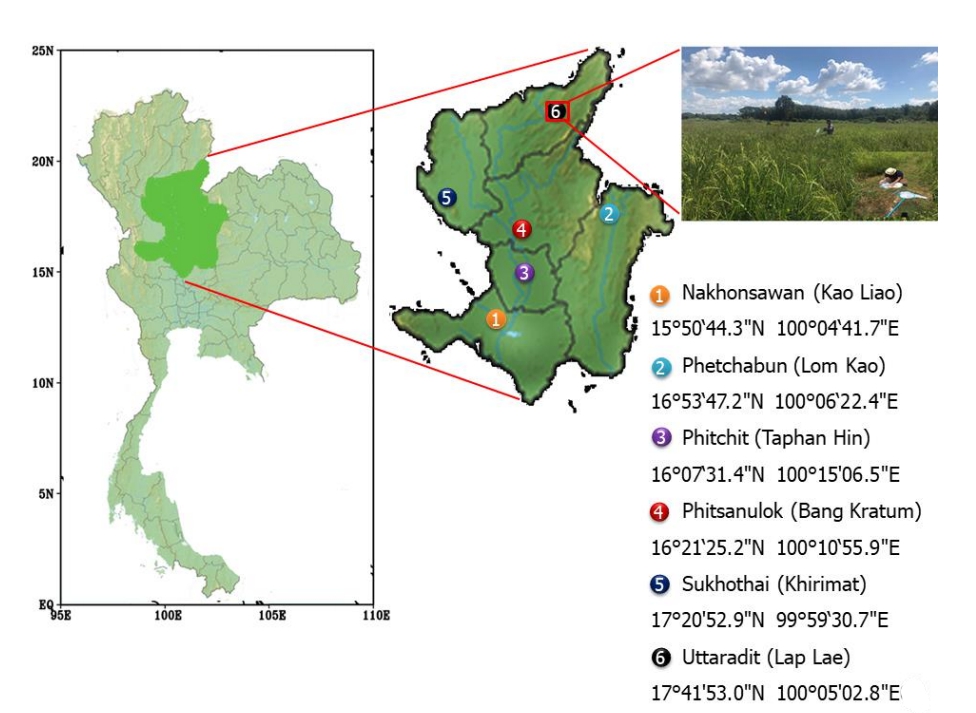The community structure of beneficial and harmful arthropod fauna in rice field ecosysterms in lower Northern Thailand
Keywords:
Species composition, rice pests, natural enemies, rice ecosystemAbstract
The purpose of this current survey was to determine the community structure of insects and spiders that inhabit rice paddy fields. Six major locations of rice-growing areas were selected in lower northen Thailand i.e. Nakhon Sawan, Phetchabun, Phichit, Phitsanulok, Sukhothai and Uttaradit provinces. In each survey site, six sampling plots of paddy field were chosen and insects and spiders were caught using sweeping nets at 20 times/sampling plot during 2017-2019. All samples were identified based on external morphology. A total of 6,459 individuals of insects and spiders were collected, representing 102 species in 69 families and 11 orders. The rice paddies of Phitsanulok showed the highest diversity (73 species). In this regard, the species diversity (H’) for all insects and spiders of all rice-growing areas was considered relatively high (3.038). Meanwhile, the Evenness (J’) and Simpson index (1-D) in all rice paddies from the pooled data set out in this survey were 0.765 and 0.919, respectively. Phichit (H’ = 3.234) showed the highest species diversity index, whereas Phetchabun and Sukhothai (H’ = 2.895) had the lowest levels of diversity. Significant differences in species diversity indexes of six rice-growing sites were detected (P < 0.05) in all comparison. The insect order of Coleoptera had the highest recored species (21 species or 20.59%). It was found that the insect pests namely, Edwardsiama hergmanni (F. Cicadellidae), Dyscinetus morator (F. Scarabaeidae) and Nilaparvata lugens (F. Delphacidae) were the dominant species. Meanwhile, Micraspis discolor (F. Coccinellidae), Agriocnemis pygmaea (F. Coenagrionidae) Oxyopes javanus (F. Oxyopidae), Temelucha philippinensis (F. Ichneumonidae), Tropobracon schoenobii (F. Braconidae) and Goniozus nr. triangulifer (F. Bethylidae)] were mainly exhibited as natural enemies in this time. Additionally, the distribution of insects and spiders was aggregated for all rice-planting areas, as indicated by the values of variance to mean ratio (S2/) and the index of aggregation (Iδ).


